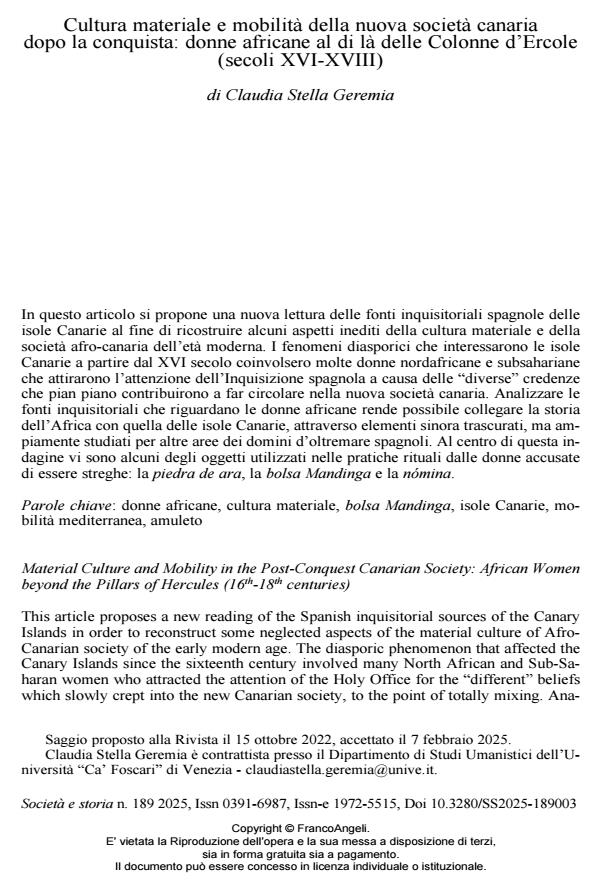Material Culture and Mobility in the Post-Conquest Canarian Society: African Women beyond the Pillars of Hercules (16th-18th centuries)
Journal title SOCIETÀ E STORIA
Author/s Claudia Stella Geremia
Publishing Year 2025 Issue 2025/189
Language Italian Pages 22 P. 571-592 File size 523 KB
DOI 10.3280/SS2025-189003
DOI is like a bar code for intellectual property: to have more infomation
click here
Below, you can see the article first page
If you want to buy this article in PDF format, you can do it, following the instructions to buy download credits

FrancoAngeli is member of Publishers International Linking Association, Inc (PILA), a not-for-profit association which run the CrossRef service enabling links to and from online scholarly content.
This article proposes a new reading of the Spanish inquisitorial sources of the Canary Islands in order to reconstruct some neglected aspects of the material culture of AfroCanarian society of the early modern age. The diasporic phenomenon that affected the Canary Islands since the sixteenth century involved many North African and Sub-Saharan women who attracted the attention of the Holy Office for the “different” beliefs which slowly crept into the new Canarian society, to the point of totally mixing. Analyzing the inquisitorial sources concerning African women makes it possible to link the history of Africa with that of the Canary Islands, through elements hitherto neglected, but extensively studied for other areas of the Spanish overseas domains. At the center of this investigation are some of the objects used in ritual practices by women accused of being witches: the piedra de ara, bolsa Mandinga and nómina.
Keywords: African Women, Material Culture, Bolsa Mandinga, Canary Islands, Mobility, Amulet
Claudia Stella Geremia, Cultura materiale e mobilità della nuova società canaria dopo la conquista: donne africane al di là delle Colonne d’Ercole (secoli XVI-XVIII) in "SOCIETÀ E STORIA " 189/2025, pp 571-592, DOI: 10.3280/SS2025-189003